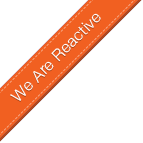One the other hand, here is an F# example. I can’t imagine having any trouble explaining the operation of this program to someone with a basic knowledge of statistics but no computer programming experience. It simply looks like what it does in a way that is succinct and comprehensible. (I did deliberately avoid constructs like folding which might make it more difficult to understand.)
Albeit this is a simple example. However, with a little experience, seemingly incomprehensible things like workflows and continuations become just as obvious in F#.
And that’s what I love about F# and why I think it has a future.
// This code is presented "as-is" and without warranty // or implied fitness of any kind; use at your own risk. // Compute basic statistics.let basicStats (l:float list) =
let sum = l |> List.sum
let count = (float) l.Length
let avg = sum / count
let std =
l
|> List.map (fun x->(x-avg)**2.0)
|> List.sum
|> (fun x->(x/(count-1.0))**0.5)
(count,sum,avg,std)
// Test.let x =
[ for i in 0..9 -> (float) i]
|> basicStats 


No comments:
Post a Comment